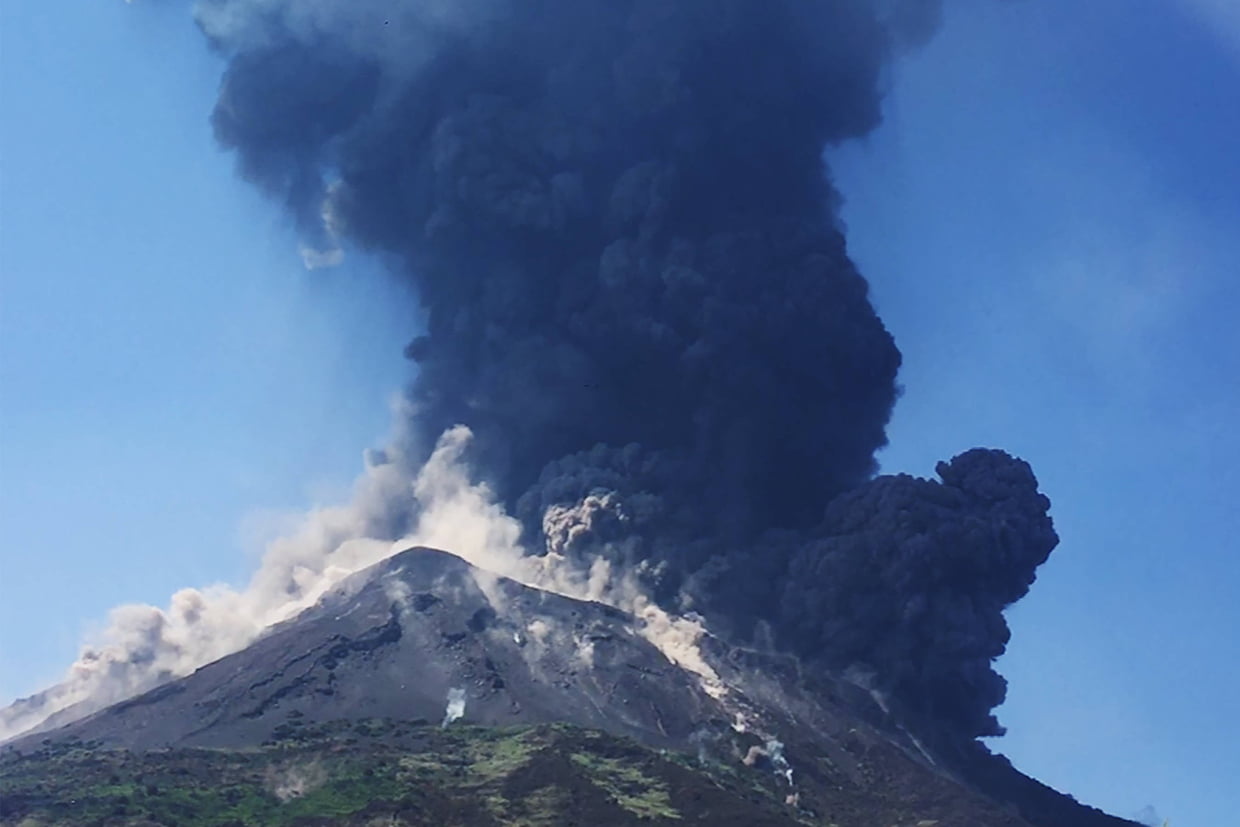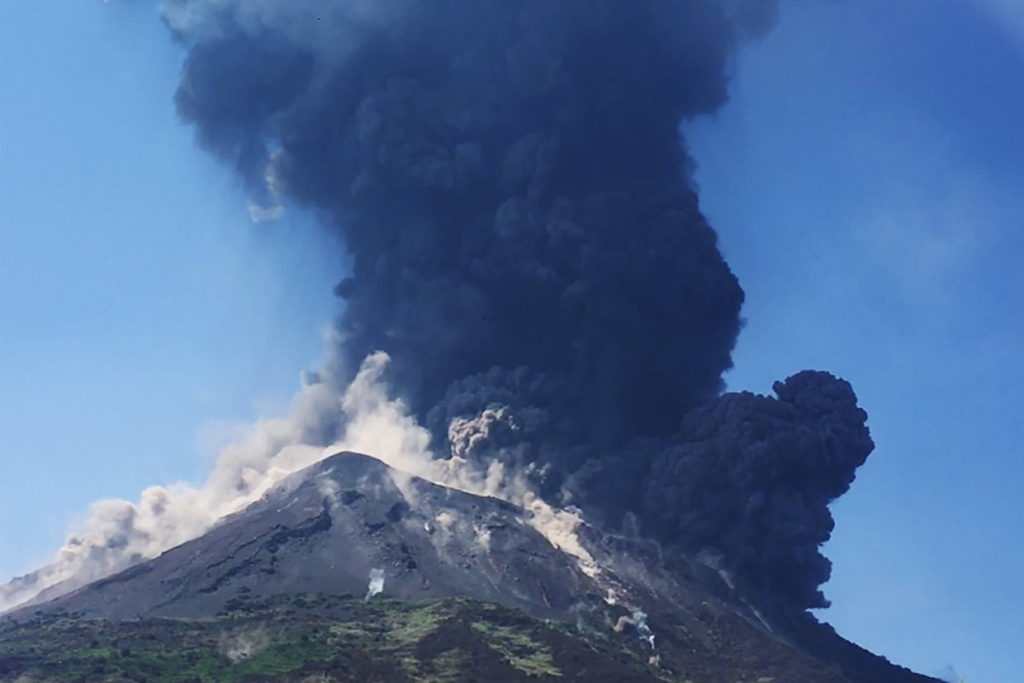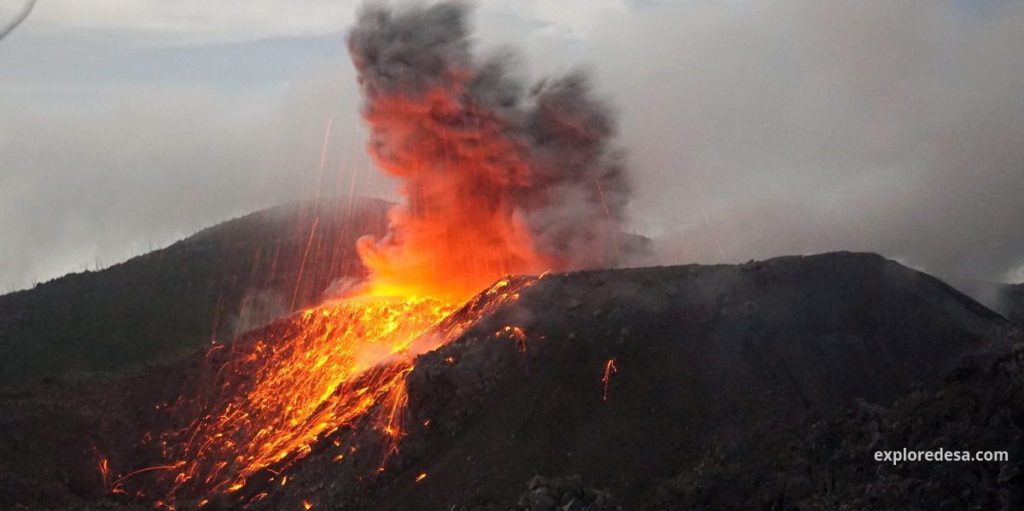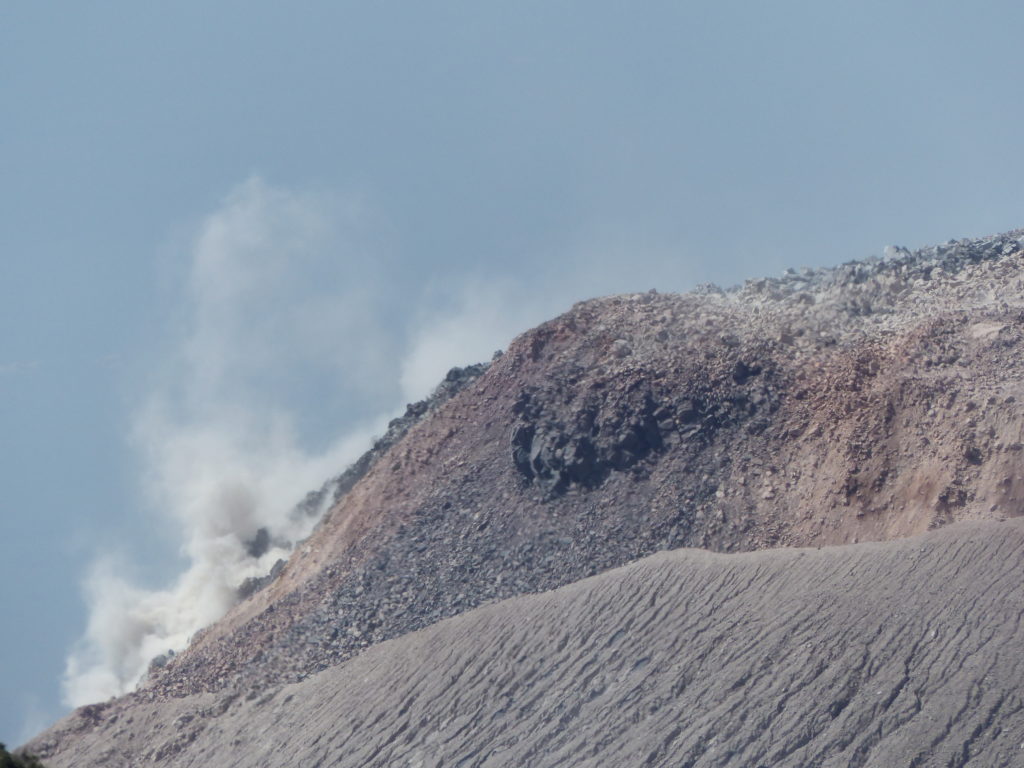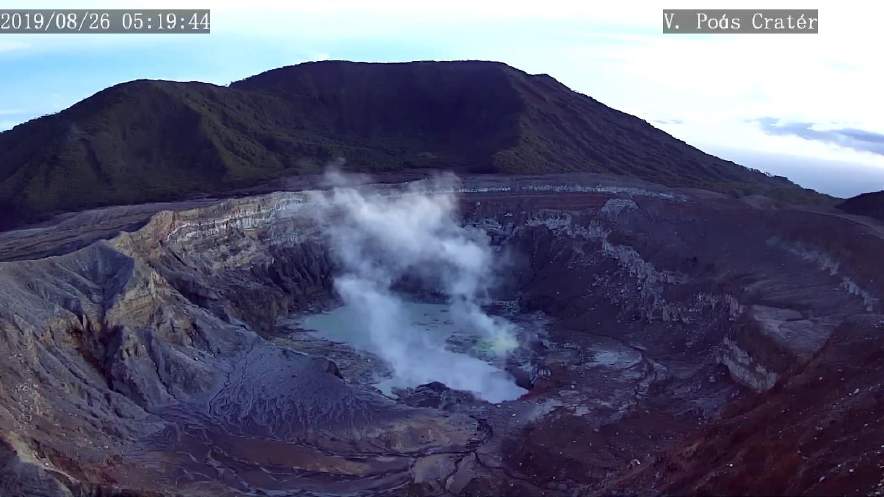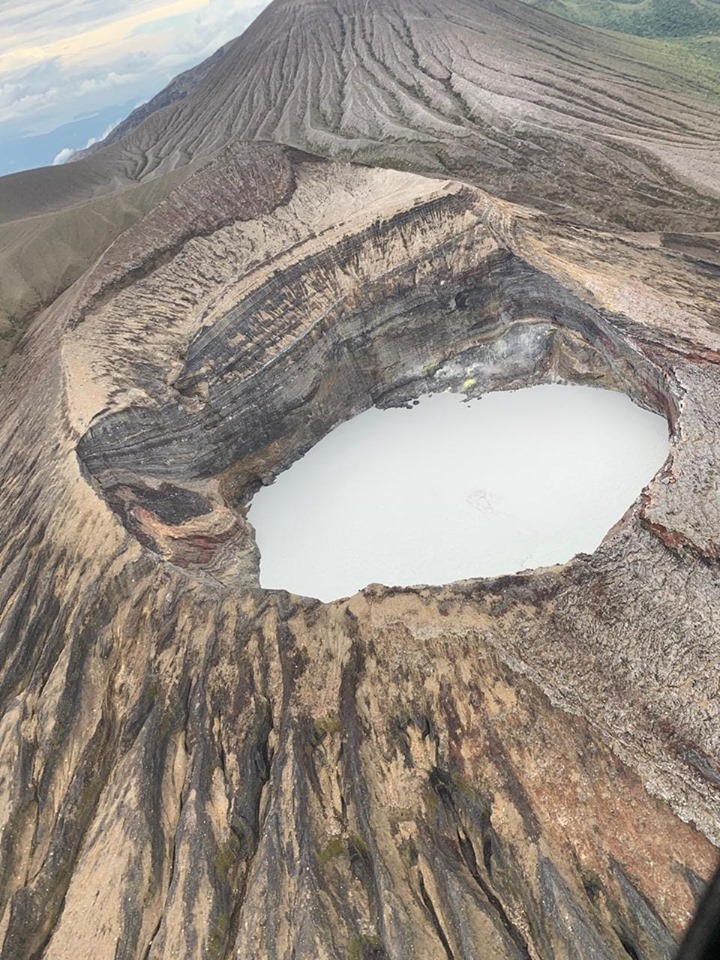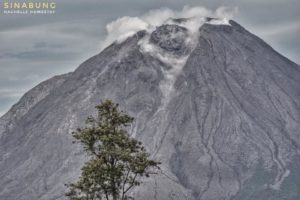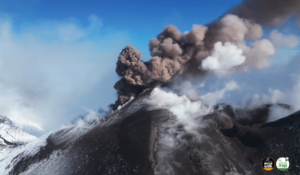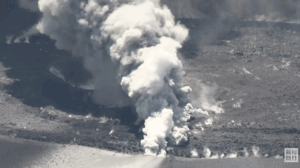September 01 , 2019 .
Italy , Stromboli :
Stromboli’s daily activity bulletin of 31/08/2019
SUMMARY OF ACTIVITY
In light of the surveillance data, we highlight:
1) VOLCANOLOGICAL OBSERVATIONS: normal explosive activity of Strombolian type accompanied by degassing activities.
2) SISMOLOGY: The amplitude of volcanic tremor, estimated at the summit station STR1, generally had moderately high values, passing at around 01:30 UTC on 31/08 at moderately low values. The magnitude of VLP events and explosion earthquakes showed generally low values.
3) DEFORMATIONS: No significant deformities are visible in the High Frequency Clinometric and GNSS networks in the days following the August 28 event.
4) GEOCHEMISTRY: the flow of SO2 shows degassing at a medium-high level.
The eruptive activity of Stromboli was characterized by the analysis of thermal and visible images recorded by the cameras located at 400 meters in Punta dei Corvi and at 190 meters altitude. In addition, on August 30th, INGV-OE personnel flew over the helicopter provided by the 2nd Air Coast Guard of Catania, which allowed characterizing the morpho-structural structure of the crater terrace of Stromboli after the paroxysmal event of August 28th.
With regard to explosive activity in the last 24 hours, a gradual decrease in the intensity and frequency of occurrence of explosive events has been observed, which makes it possible to classify current activity as ordinary type.
Analysis of the thermal and visible data and volcanological observations gathered during the overflight showed that the area of the North Crater has collapsed and that it contains a main explosive mouth producing strombolian activity and two other mouths that are characterized by a explosive activity of less intensity. In the area of the South Central Crater (CS), only one large crater emerges, from which normal Strombolian activity is observed.
As indicated in the update notification N * 33 of 30/08/2019, the lava overflow that started at 01:50 UTC on August 30, 2019 from the Center-South zone of the crater terrace has been stopped since yesterday. afternoon. The lava field gradually cools and the only thermal anomalies present along the Sciara del Fuoco are inside the lava fields in cooling.
Seismology.
The bulletin is established with data acquired from a maximum of 7 stations. The seismic activity recorded during the last 24 hours has the following characteristics: No seismic signal associated with a landslide has been recorded. The magnitude of the volcanic tremor, estimated at the summit station STR1, was generally medium-high, decreasing at about 01:30 UTC on 31/08 to medium-low values.
Very long period (VLP) event counting provides an average of about 27 events / hour.
The magnitude of VLP events over the last 24 hours has shown a decrease in amplitude towards generally low values.
The magnitude of the explosion earthquakes over the past 24 hours has shown generally low values.
Source : INGV .
Read the full article:
Photos : L’internaute , Marco Iacono.
Indonesia , Ibu :
Level of activity at Level II (WASPADA). The G. Ibu (1340 m altitude) has been erupting continuously since 2008. Since yesterday and until this morning, the volcano was clearly visible until it was covered by fog. Smoke from the crater is observed at a height of 200 to 800 meters above the summit of the peak, with low to moderate pressure, while the gray-white plume moves north and east with a low to moderate intensity. average .
The seismograph of August 31, 2019, recorded: zero (damaged device)
Recommendations: Communities around G. Ibu and visitors / tourists should not climb or approach within a radius of 2 km around the crater, with a sectoral expansion of 3.5 km towards the opening in the northern part of the active crater of Mount Ibu.
VOLCANO OBSERVATORY NOTICE FOR AVIATION – VONA .
Issued: August 31 , 2019
Volcano: Ibu (268030)
Current Aviation Colour Code: ORANGE
Previous Aviation Colour Code: orange
Source: Ibu Volcano Observatory
Notice Number: 2019IBU08
Volcano Location: N 01 deg 29 min 17 sec E 127 deg 37 min 48 sec
Area: North Maluku, Indonesia
Summit Elevation: 4240 FT (1325 M)
Volcanic Activity Summary:
Eruption with volcanic ash cloud at 09h47 UTC (18h47 local)
Volcanic Cloud Height:
Best estimate of ash-cloud top is around 6800 FT (2125 M) above sea level, may be higher than what can be observed clearly. Source of height data: ground observer.
Other Volcanic Cloud Information:
Ash-cloud moving to North.
Remarks:
Seismic activity is characterized by explosion and rock avalanches earthquakes
Source : PVMBG , Magma Indonésie.
Photo : Exploredesa.com.
Guatemala , Santiaguito :
Activity type: Pelean
Morphology: Complex of Dacitic Domes.
Geographical location: 14 ° 44 ’33 ˝ Latitude N; 91 ° 34’13˝ Longitude O
Height: 2,500msnm
Atmospheric conditions: Clear weather
Wind: West 4 km / h
Precipitation: 0.0 mm.
Activity:
Presence of weak, white-colored degassing at 3,000 meters (9,843 feet) that disperses to the southwest. There are 2 to 3 explosions per hour with weak characteristics, generating ash columns at an altitude of approximately 3,400 meters above sea level. They move to the southwest and cause ashes to fall the mountainous areas of the Monte Claro region. There are steady to moderate avalanches on the south-east and south flanks.
Source : Insivumeh.
Photo : G Vitton.
Costa Rica , Turrialba / Poas / Rincon de la Vieja :
Daily report of the state of volcanoes. Date: August 31, 2019, Updated at: 13:45:00.
Turrialba Volcano:
No eruption is reported.
The seismic activity is higher than yesterday.
At the time of this report, the winds blow from the northwest.
During the past 24 hours, seismographs recorded long-lived, low-frequency volcanic earthquakes associated with hydrothermal activity and degassing on the volcano (transport of water and steam through cracks, and the vents). The plume of vapor, gas and aerosol is rich in water vapor and contains little magmatic gas and a low particulate load. The MultiGAS station has about 8 ppm of SO2 and a low concentration of H2S (H2S / SO2 = 0.28) near the west crater. NASA’s AURA satellite does not detect significant plumes of volcanic SO2.
Poas Volcano:
No eruption is reported.
The seismic activity is lower than yesterday.
At the time of this report, winds are blowing from the south.
Seismographs do not record significant seismic activity. The MultiGAS gas sensor located in the active crater of Poás now registers the SO2 gas concentration at approx. 4.4 ppm and small amounts of H2S (H2S / SO2 = 0.27). On the other hand, the OVSICORI-UNA ExpoGAS real-time volcanic gas monitoring station located in El Mirador for visitors today recorded SO2 concentrations not exceeding 2 ppm, but around 13:45, it reached 5 ppm for a period of about 2 minutes. The maximum exposure limit for accepted humans is an average of 0.2 ppm SO2 for an exposure period of one hour. Therefore, it is recommended that visitors to the Poás Volcano National Park follow the instructions of park administrators to minimize the effects of volcanic gases on human health. A new ultra-acid lake emerges.
Rincon de la Vieja Volcano:
No eruption is reported.
The seismic activity is lower than yesterday.
At the time of this report, the winds blow towards the West
Rincon de la Vieja, August 21, 2019. Ultra-acid gray lake due to the convection of water and sediments due to the presence of fumaroles under water. The lake level is relatively low because of the rainfall deficit since 2019.
Seismographs do not record significant seismic activity. The geochemical water monitoring station of the Ojo de Agua Santuarium, located 4 km north of the main crater, has detected between August 3 and until today a total temperature increase of approx. 1 degree Celsius (31.3 ° C to 32.1 ° C); a slight pH fluctuation between 3.71 and 3.73. There is also an increase in redox potential (ORP) from 1450 to 1570 mV, indicating more oxidized waters and a higher content of dissolved mineral salts (from 1620 to 1750 uS / cm). These changes in the Ojo de Agua Santuarium could reflect: 1) An increase in the flow of the Rincón hydrothermal magmatic system due to the hydraulic thrust exerted by rainwater infiltrating into the subsoil. The behavior of these parameters is under study because they are influenced by exogenous effects (meteorology) and endogenous effects (underground infiltration of magmatic fluids).
Source : Ovsicori.
Photos : Christopher Allen/ Sunquest Helitours ( via Maria Martinez ).

